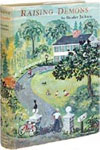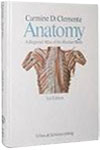De novissimis circa fixorum siderum errores observationibus, pp. 599-639 and 2 plates in: De Bononiensi scientiarum et artium instituto atque academia commentarii, vol. I. THE FIRST OBSERVATIONAL CONFIRMATION OF THE COPERNICAN HYPOTHESIS
MANFREDI, Eustachio
From
Landmarks of Science Books, Richmond, United Kingdom
Seller rating 5 out of 5 stars
![]()
AbeBooks Seller since 17 March 2016
About this Item
Description:
First edition. "Manfredi undertook systematic observations to verify if there were perceptible shifts in the positions of the stars. If observed, these displacements would allow him to measure stellar parallax and confirm the Earth's annual revolution around the Sun; the issue of heliocentric and geocentric systems was still being debated. The initial observations revealed small shifts in the positions of the stars, yet they were not attributable to the parallactic displacement. The results were published in 1729 in 'De annuis inerrantium aberrationibus'. That year, James Bradley offered the correct explanation for this phenomenon, later called "annual aberration of starlight," after the title of Manfredi's publication [namely, the varying direction and speed of the earth in its orbit, combined with a constant speed of light from the star]. Two years later, in Tome I of the Commentarii dell Accademia delle Scienze, Manfredi published a treatise entitled 'De novissimis circa fixorum siderum errores observationibus', adding other observations to those of Bradley. Manfredi was the first to confirm Bradley's hypotheses. He did not explicitly express an opinion that would link him too closely to Bradley's explanations, due to the local political and religious situation. Nevertheless, it was the first evidence of the Earth's movement around the Sun" (Biographical Encyclopedia of Astronomers, p. 734). Manfredi's paper is contained in the complete first volume of 'De Bononiensi scientiarum et artium instituto atque academia commentarii'; this contains numerous other articles by Manfredi, Beccaria, Morgagni, Scheuchzer and others. Of particlar importance is Jacopo Riccati's 'Vera & germana virium elasticarum leges' (pp. 527-544 and 2 plates). "This memoir is of very considerable interest; it marks the first attempt since Hooke to ascertain by experiment the laws which govern elastic bodies" (Todhunter, A History of the Theory of Elasticity and the Strength of Materials, p. 22). "The Accademia delle Scienze dell'Istituto di Bologna was formally inaugurated in 1714, and the Accademia degli Inquieti merged into it . . . The science academy initially had five professorial chairs. Marsigli's vision was that the Accademia delle Scienze would carry out scientific research in the tradition of Galileo and Newton. At first, the institute did not come up to Marsigli's expectations. He found that it was used only as a place for intellectual entertainment, a place to show off to visitors to the city, and few people attended the lectures or scientific demonstrations. In 1723 a serious conflict arose between Marsigli, who had largely funded the institute, and the Senate of Bologna, who were in charge of it. The Senate had not, in Marsigli's view, met the conditions of his donation. With pressure from the Pope, the issues were temporarily resolved to Marsigli's satisfaction in 1726, but his enemies continued to be obstructive, and in 1728 Marsigli abandoned his project in disgust. Marsigli died in 1730. Various changes and additions were made to the two-story Palazzo Poggi to accommodate the needs of the institute. The Astronomical Observatory Tower was built in 1725 to a design by Carlo Francesco Dotti. Laboratories, galleries and workshops were set up, and the institute became a research facility as well as a venue for exchanging information . . . The institute published its first volume of Proceedings in 1731, three volumes between 1745 and 1747, and five more volumes before the end of the eighteenth century. The institute helped pull Bologna out of its provincial isolation, reengaging with centers such as the French Academy of Sciences and the British Royal Society" (Wikipedia). 4to, pp. [x], 647, [1], 9 plates. Contemporary vellum (a few stains). Internally fine. Seller Inventory # ABE-1600362665160
Bibliographic Details
Title: De novissimis circa fixorum siderum errores ...
Publisher: Ex Typographia Laelii a Vulpe
Publication Date: 1731
Binding: Hardcover
Condition: Very Good
Edition: 1st Edition
AbeBooks offers millions of new, used, rare and out-of-print books, as well as cheap textbooks from thousands of booksellers around the world. Shopping on AbeBooks is easy, safe and 100% secure - search for your book, purchase a copy via our secure checkout and the bookseller ships it straight to you.
Search thousands of booksellers selling millions of new & used books
New & Used Books
New and used copies of new releases, best sellers and award winners. Save money with our huge selection.
Rare & Out of Print Books
From scarce first editions to sought-after signatures, find an array of rare, valuable and highly collectible books.





